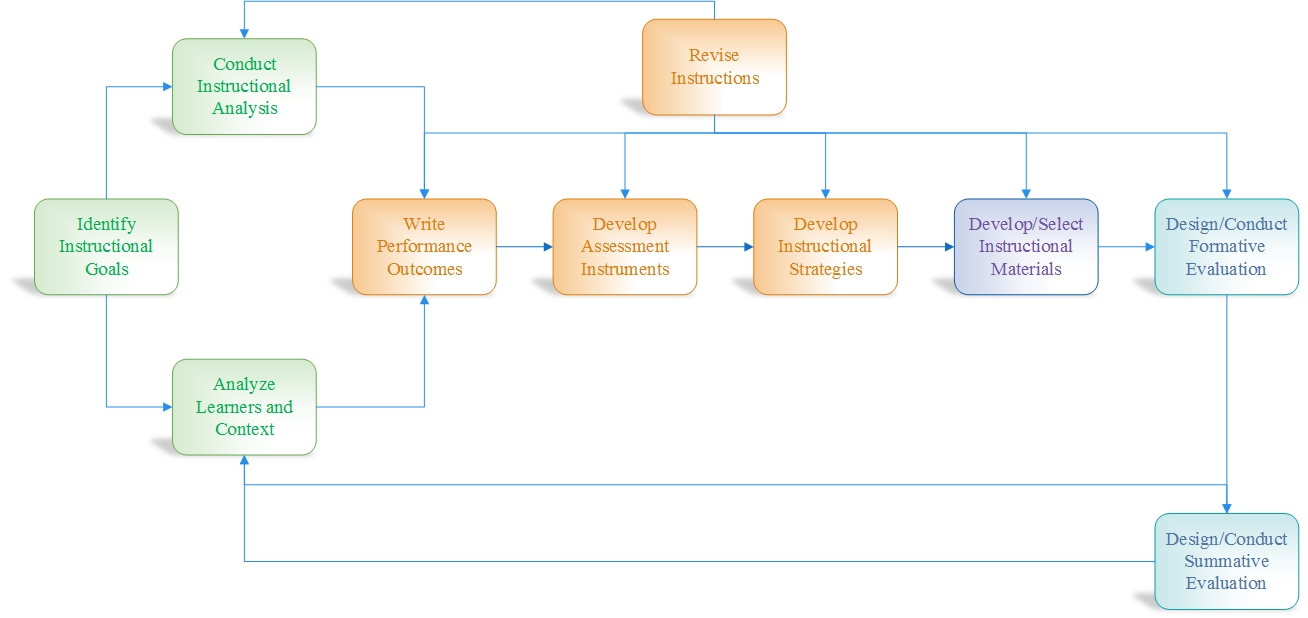
Instructional design, also known as instructional systems design (ISD), is systematic planning of instructions based on learning needs. ADDIE (Analysis, Design, Development, Implementation, and Evaluation) is a generic ISD model that provides necessary structure to design any curriculum. Many design models were originated or derived from ADDIE.
For instructions to be effective, learning outcomes, instructional strategies and assessment methods must be in congruence. When instructions are engaging, students will be more likely to participate actively. Therefore, course content, exercises, and assessment tasks/formats must be selected carefully by instructors to align with the learning outcomes. Faculty are strongly encouraged to use backward course design as the foundation when planning instructions. Though a more systematic approach such as Dick and Carey model is highly recommended:

Like backward design, it starts with identification of instructional outcomes. Upon the analysis of student background knowledge, their characteristics, the task, and learning environments, outcomes are written or updated. Then, faculty can write or acquire assessment items that can effectively determine whether students have mastered the skills or content stated in the outcomes/objectives - before, during, and after. This will guide the formulation of instructional strategies, as well as gathering of course content (e.g. OER).
| Analysis: | identify instructional goals, conduct instructional analysis, analyze learners and context |
| Design: | write measurable outcomes, develop assessment instruments, develop instructional strategies, revise instructions |
| Development: | develop and select instructional materials |
| Implementation: | (deliver content; ideally this is ongoing and disseminated among design-development-evaluation stages) |
| Evaluation: | develop and conduct formative evaluation, develop and conduct summative evaluation |
While this is a careful plan, many factors could affect student performance. During the process, formative evaluations are administered as a feedback mechanism to help adjust ongoing instructions. It includes small trials before releasing instructions. At the end, compared to known standards, summative outcomes assessment measures the level of proficiency that students obtain for each lesson or program, which prompts the next round of improvement in course design.
This cyclical process can be used for program, course, or lesson level. In other words, improvements can be made at any stage!
